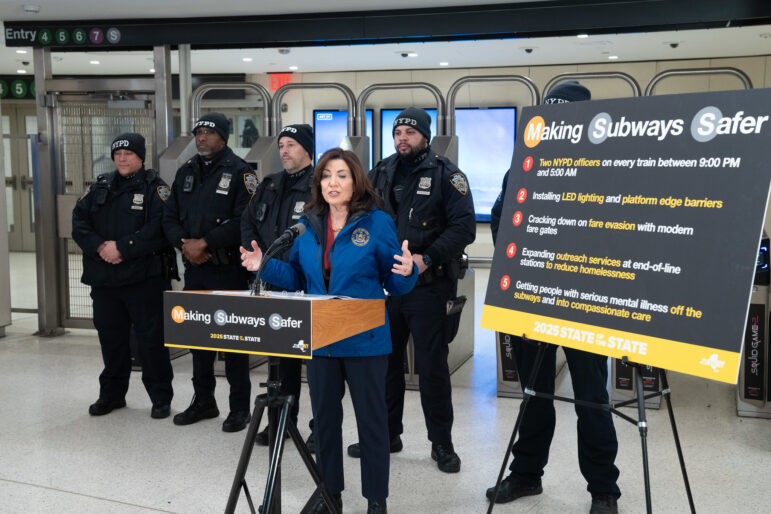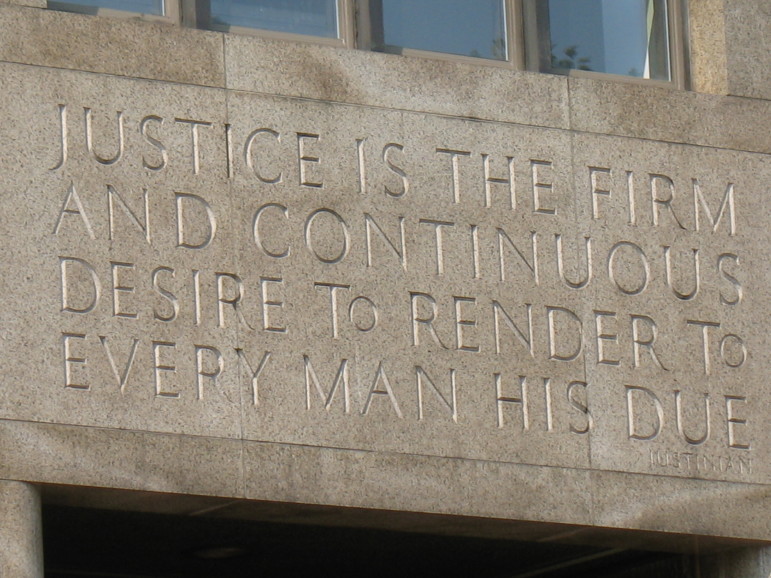“Off with our heads!” That’s what the board of the No. 2-ranked school district in the city expects to say this week when it votes on a resolution calling for the elimination of community school boards as New York knows them.
Attempting to head off the state legislature’s own conclusions on the future of school governance in the Big Apple, School Board 2 is scheduled to weigh in on the issue Wednesday night, and the proposal’s sponsors say they’re confident it will pass.
“We know there is a better way,” board president Karen Feuer, the author of the resolution, said of the current school board system. Pointing to low voter turnout in recent board elections–only 3 percent of eligible voters went to the polls in 1999–and the absence of any real power or authority on the boards since the state legislature shifted budgetary and management responsibilities to the superintendents and chancellor five years ago, the resolution encourages “the development of another governance model that ensures public involvement, maximum parental participation and accountability by the superintendent to all stakeholders in the system.”
In short, said six-year Board 2 member Douglas Robinson, “We would like to be abolished immediately.”
These are strong words from the overseers of a district, covering the East Side of Manhattan as well as a stretch of the West Side from the Village to Hell’s Kitchen, recognized nationally for innovative approaches to professional and curriculum development.
One thing’s for sure: Big changes are being considered for school boards, and the boards want to have their say–even if it’s for the last time. Last week, amid discussions over the future of the central Board of Education, Governor Pataki postponed elections for seats on the city’s 32 school boards, originally scheduled for this May, until next year. As long as school governance is under review, he said, new board members should not be brought in. Mayor Mike Bloomberg has called for the abolition of both the local boards and the central Board of Education, but by state law only Albany’s legislature can make this happen. (Assembly Speaker Sheldon Silver’s task force on school governance is expected to release some conclusions by early March.) In addition, because the boards are publicly elected bodies, the Department of Justice must also approve their elimination.
But not every board is preparing to disappear quietly. While Board 2 would be the first to formally vote for its own demise, members of Board 3 on the Upper West Side are circulating their own statement touting school boards’ importance as citizens’ only elected voice for public schooling. Getting rid of the boards, said Board 3 president Roni Wattman, “would be like taxation without representation.”
One alternative proposal has been floated to State Assemblyman Steve Sanders, chair of the assembly’s education committee, and to Deputy Mayor Dennis Walcott. Written by Board 22 member Anne Mackinnon of Flatbush, the proposal calls for creating a seven-member appointed board in each district: two members named by the district’s council of PTA presidents, one by the teacher’s union, one by the principal’s union and three, ideally with some expertise in education, chosen by the superintendent and approved by the chancellor.
In addition to attracting members with more of an interest in improving education than in political aspirations, Mackinnon said she hopes the direct involvement of the superintendent and the chancellor in selecting the board would immediately give it more legitimacy. “If the chancellor has incentive to work with the boards,” she said, “we’re going to have so much more to share with the public.”








